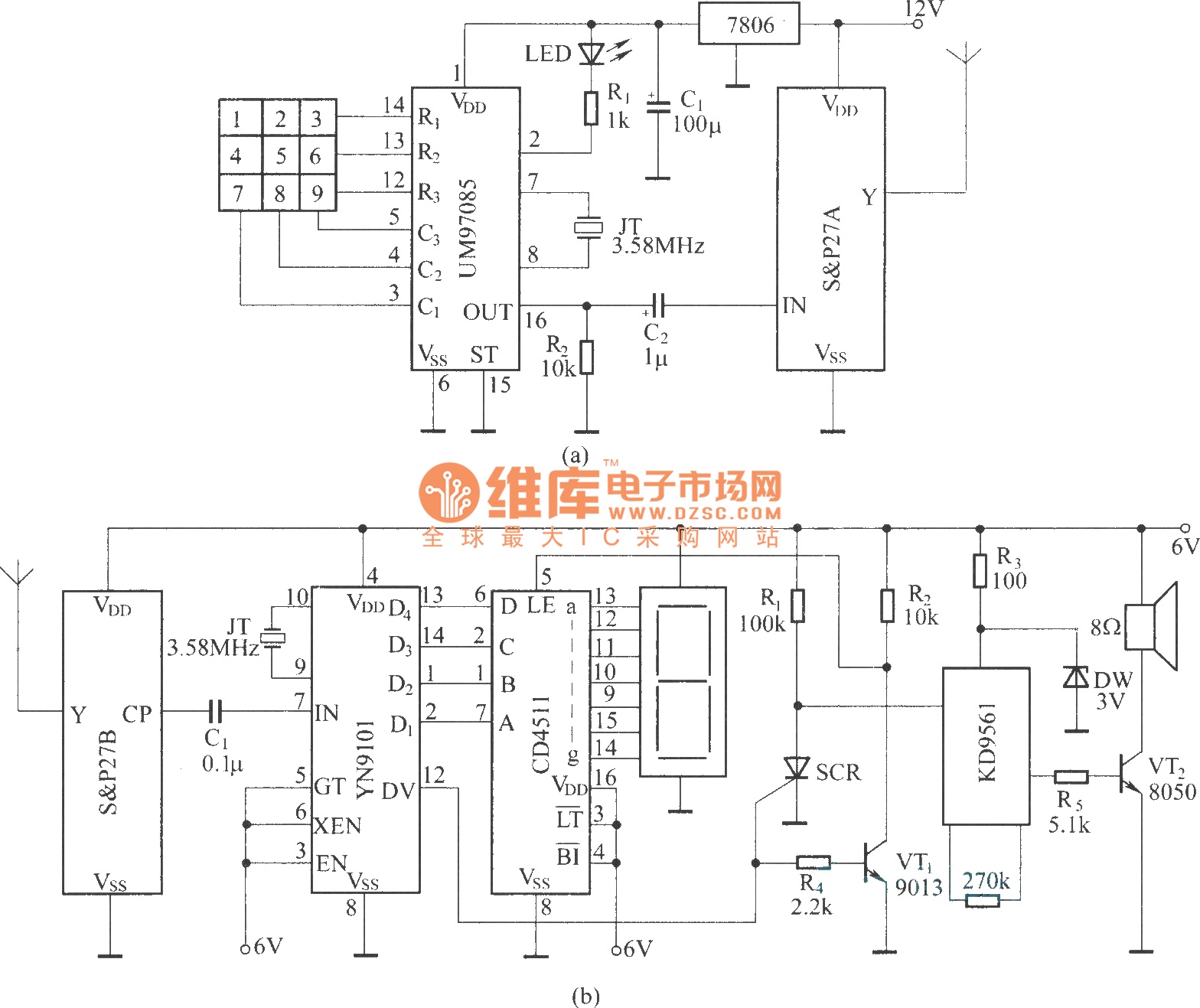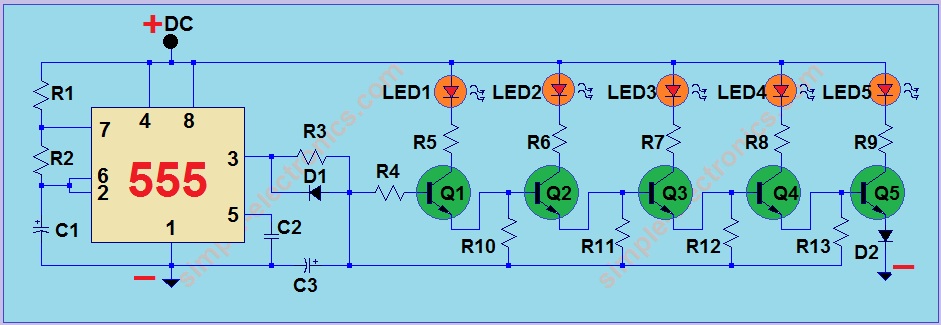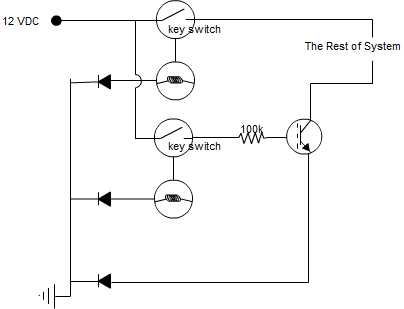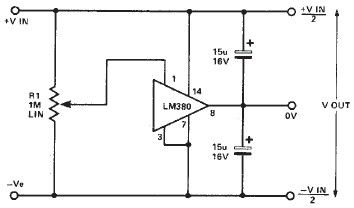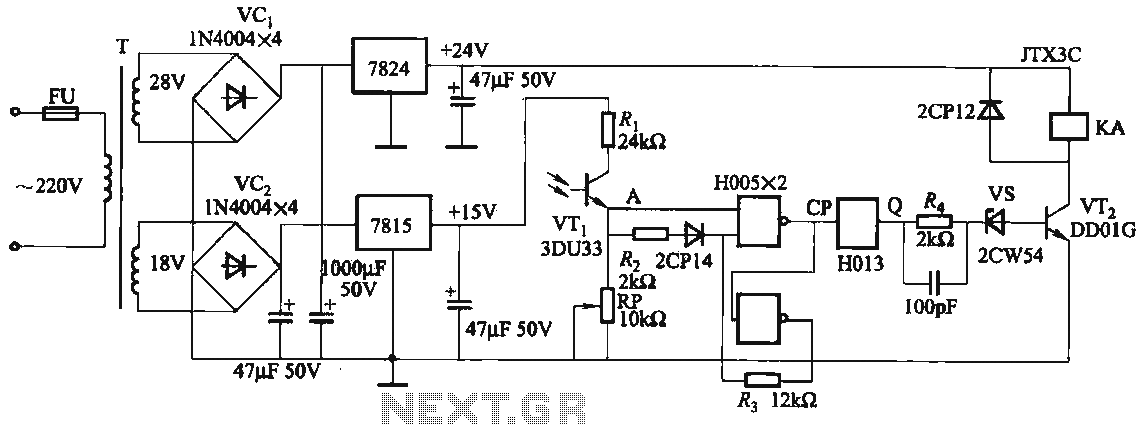
powering circuit using serial port

Power an RS232-TTL converter circuit using the serial port to eliminate the need for an external power supply. It has been noted that the DTR, RTS, and TD pins can facilitate this. Since the TD pin is already utilized for data transmission, is it possible to use the DTR or RTS pins to power the circuit? Additionally, Visual Basic is used to send signals to the serial port. Does this imply that a series of logic 0's (which represent positive voltage in RS232) must be sent in an infinite loop within the code to maintain a constant high output voltage? The three interconnected pins activate (go high) when the software initializes, suggesting they can be controlled via code, though the exact mechanism is unclear to those without a software background. Furthermore, some PC UARTs do not drive the RS232 lines to a sufficiently high voltage. The RS232 specification permits operational voltages down to ±5V. Through experimentation, it has been determined that this regulator circuit requires a minimum input voltage of 6.2V to function correctly, and the laptop does not provide a high enough RS232 voltage to power the circuitry.
The RS232-TTL converter circuit can be powered through the serial port by utilizing the DTR (Data Terminal Ready), RTS (Request to Send), and TD (Transmit Data) pins. The TD pin is primarily used for data transmission, while the DTR and RTS pins can be employed to provide power to the converter circuit. However, the feasibility of using these pins for power depends on the specific implementation of the UART in the host system.
When employing Visual Basic to send signals to the serial port, it is essential to maintain a high output voltage to ensure proper operation of the circuit. Sending a continuous series of logic 0's may be necessary to keep the DTR or RTS pins in a high state, effectively supplying power to the RS232-TTL converter. The software controlling these pins must be configured correctly to ensure they are activated upon initialization.
It is important to note that not all PC UARTs can drive the RS232 lines to the required voltage levels. The RS232 standard allows for operational voltages down to ±5V; however, many devices may not meet these specifications. The regulator circuit used in the application has been found to require a minimum input voltage of 6.2V to operate effectively, which poses a challenge if the laptop does not output sufficient voltage.
In summary, utilizing the DTR or RTS pins for powering an RS232-TTL converter is a feasible approach, provided the software is configured correctly to maintain the necessary high output voltage. Additionally, consideration must be given to the capabilities of the PC's UART to ensure it meets the voltage requirements for reliable operation of the circuitry.Power a rs232-TTL converter circuit using the serial port so i dont have to have an external power supply to do the job. I read somewhere that the DTS, RTS and TD pins are able to do this. As I am already using the TD pin to send out data, is there any other way that i can use the DTS or RTS pin to power my circuit Besides that, I am using VB to send
out the signals to the serial port. Does that mean i have to send out a series of Logic 0`s (positive voltage in rs232) in an infinite loop in my coding in order to get a constant high output voltage 1) The 3 tied-together pins activate (go high) when the software is started so somehow those pins are controlled by code and I don`t know how they do that (I`m not a software person). 2) The UART in some PC`s do not drive the RS232 lines with a high enough voltage. The RS232 specification allows an operational voltage down to +/-5V. Through experimentation I found that this regulator circuit requires a minimum input voltage of 6. 2V to regulate properly. My laptop would not output a high enough RS232 voltage to operate the circuitry. 🔗 External reference
The RS232-TTL converter circuit can be powered through the serial port by utilizing the DTR (Data Terminal Ready), RTS (Request to Send), and TD (Transmit Data) pins. The TD pin is primarily used for data transmission, while the DTR and RTS pins can be employed to provide power to the converter circuit. However, the feasibility of using these pins for power depends on the specific implementation of the UART in the host system.
When employing Visual Basic to send signals to the serial port, it is essential to maintain a high output voltage to ensure proper operation of the circuit. Sending a continuous series of logic 0's may be necessary to keep the DTR or RTS pins in a high state, effectively supplying power to the RS232-TTL converter. The software controlling these pins must be configured correctly to ensure they are activated upon initialization.
It is important to note that not all PC UARTs can drive the RS232 lines to the required voltage levels. The RS232 standard allows for operational voltages down to ±5V; however, many devices may not meet these specifications. The regulator circuit used in the application has been found to require a minimum input voltage of 6.2V to operate effectively, which poses a challenge if the laptop does not output sufficient voltage.
In summary, utilizing the DTR or RTS pins for powering an RS232-TTL converter is a feasible approach, provided the software is configured correctly to maintain the necessary high output voltage. Additionally, consideration must be given to the capabilities of the PC's UART to ensure it meets the voltage requirements for reliable operation of the circuitry.Power a rs232-TTL converter circuit using the serial port so i dont have to have an external power supply to do the job. I read somewhere that the DTS, RTS and TD pins are able to do this. As I am already using the TD pin to send out data, is there any other way that i can use the DTS or RTS pin to power my circuit Besides that, I am using VB to send
out the signals to the serial port. Does that mean i have to send out a series of Logic 0`s (positive voltage in rs232) in an infinite loop in my coding in order to get a constant high output voltage 1) The 3 tied-together pins activate (go high) when the software is started so somehow those pins are controlled by code and I don`t know how they do that (I`m not a software person). 2) The UART in some PC`s do not drive the RS232 lines with a high enough voltage. The RS232 specification allows an operational voltage down to +/-5V. Through experimentation I found that this regulator circuit requires a minimum input voltage of 6. 2V to regulate properly. My laptop would not output a high enough RS232 voltage to operate the circuitry. 🔗 External reference
